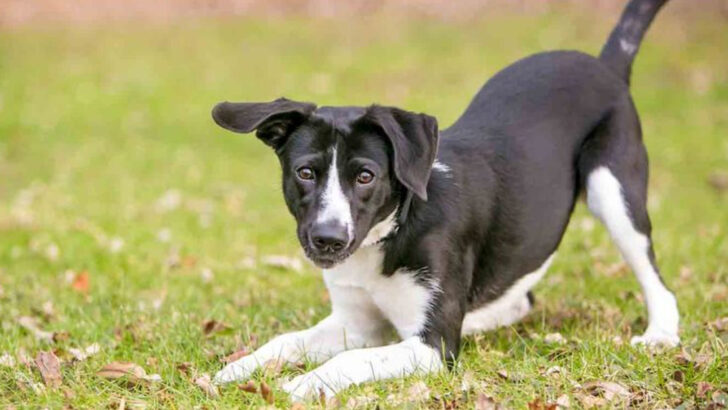Dogs are experts at reading the room. When they want to say, “I’m not a threat,” they have a whole set of calming signals—subtle, yet powerful gestures that speak volumes. If you know how to spot them, you’ll unlock a deeper understanding of your furry friend.
From a relaxed gaze to a soft wag of the tail, these signals are dogs’ way of saying, “I mean no harm.” They communicate peace, lowering the tension in any situation. It’s their way of telling you—and others—that everything is okay.
In this guide, we’ll walk you through 14 of these calming gestures. Each one is a clue to what your dog is feeling, helping you respond with more confidence and care. Get ready to decode their silent language and build a stronger, more peaceful connection with your best friend.
Yawning
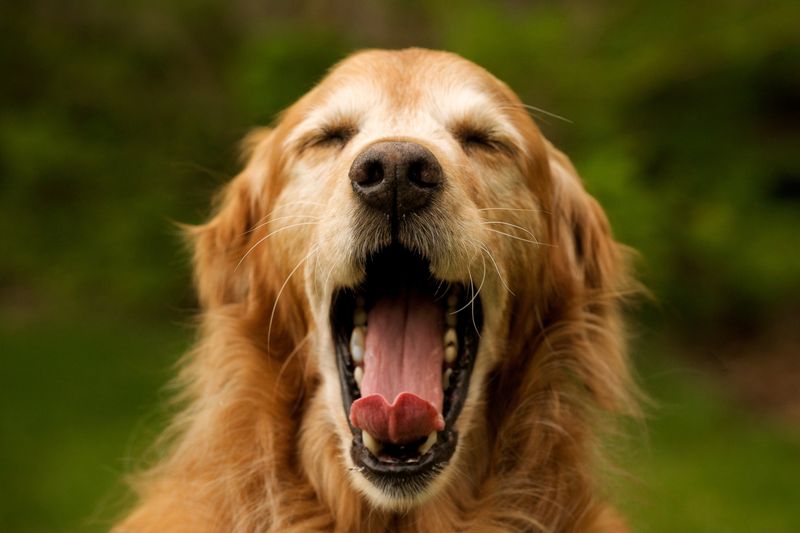
Yawning in dogs is not just a sign of tiredness; it’s a powerful calming signal. When a dog yawns, it often indicates they are feeling uneasy or are trying to defuse a stressful situation.
This behavior can be seen during interactions with other dogs or even humans. For instance, if you notice your dog yawning excessively at a dog park, it might be their way of telling you that they are overwhelmed.
Recognizing and respecting this signal can help you adjust your dog’s environment to make it more comfortable, enhancing their sense of security.
Licking Lips

Lip licking is a subtle yet effective way dogs communicate their unease or attempt to calm themselves. This behavior often occurs when a dog is in an unfamiliar environment, such as a vet clinic or during a thunderstorm.
It’s a gentle indicator that they are trying to self-soothe. Observing this behavior can guide you in understanding your dog’s comfort level. Offering reassurance or removing them from stressful situations can help them feel at ease.
This signal is not always about food and should be interpreted within the context of their current surroundings.
Turning Away
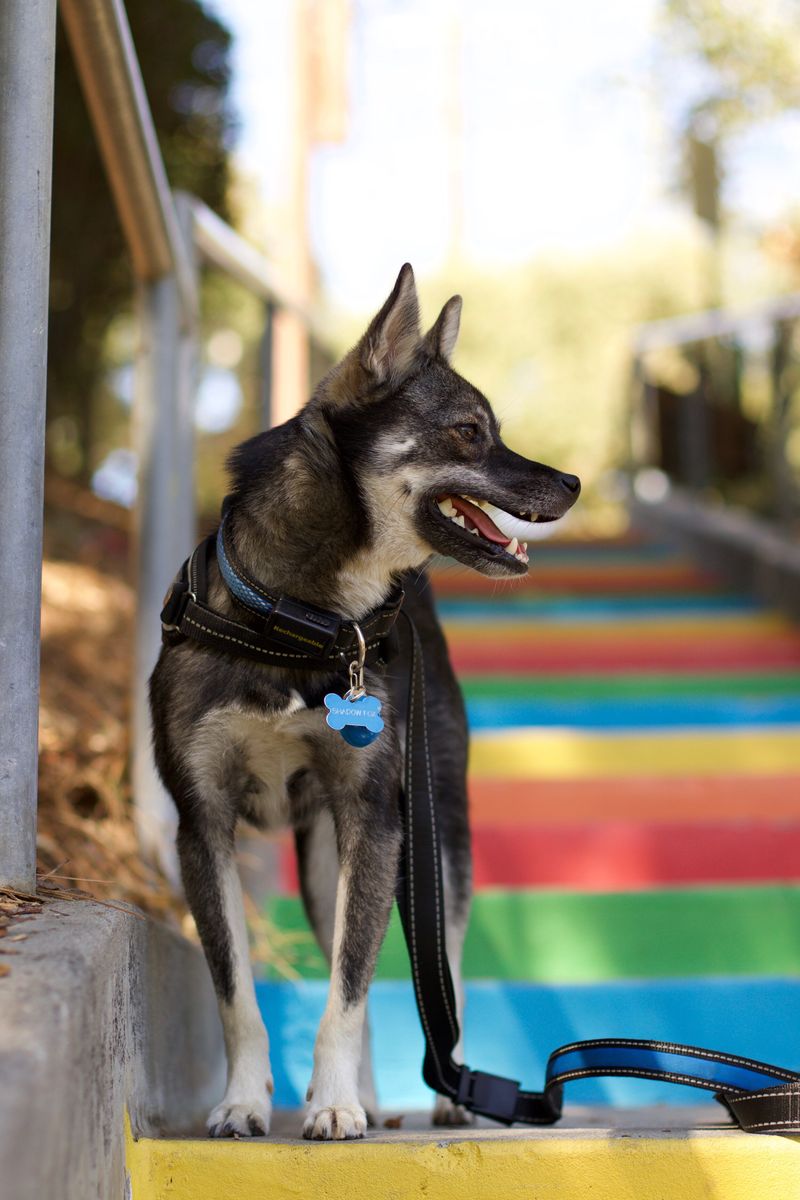
When a dog turns its head away, it’s often showing a desire to avoid confrontation or stress. This gesture is particularly common in social settings, like busy dog parks.
By looking away, dogs signal that they don’t wish to engage in any aggressive or threatening behavior. If your dog consistently turns away in certain situations, it may be beneficial to assess the environment and decide if adjustments are needed.
Understanding this signal helps in creating a more relaxed and positive experience for your furry friend, ensuring they feel safe and comfortable.
Freezing
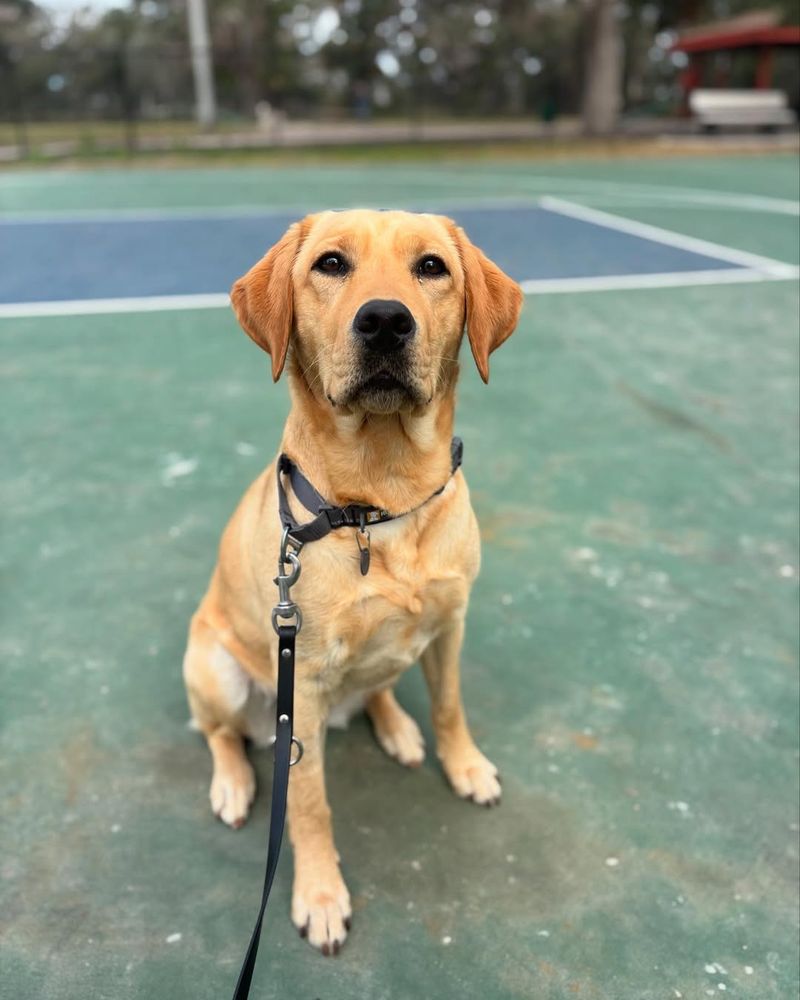
A dog freezing in place can be a sign that they are feeling anxious or uncertain. This behavior is often a response to sudden changes in their environment or when confronted with unfamiliar situations.
For example, on a hiking trail, a Husky might freeze if they spot a new, potentially threatening animal. Observing your dog’s body language is key to understanding their needs.
Offering gentle encouragement or removing the source of stress can help. This behavior highlights the importance of patience and understanding when interacting with dogs in new or challenging settings.
Tail Wagging
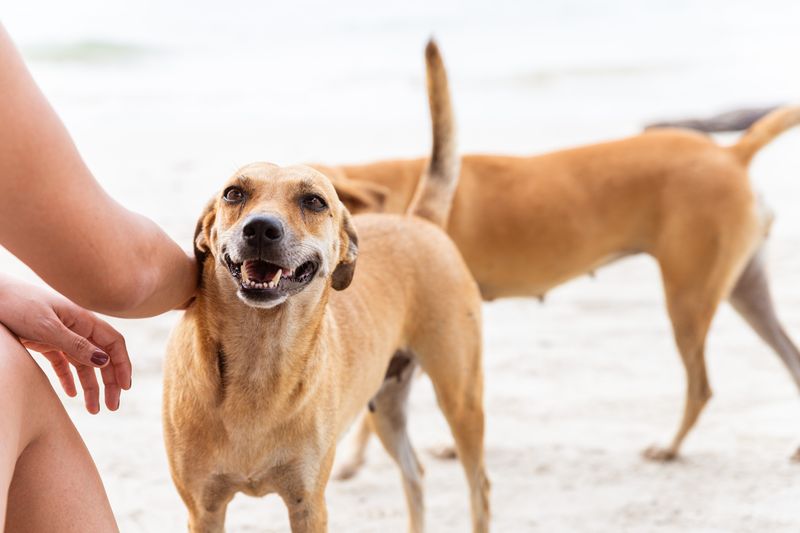
While many interpret tail wagging as a sign of happiness, the speed and position of the wag can tell a different story. A slow, low tail wag often indicates a dog is feeling insecure or wants to avoid a threat.
In a suburban backyard, a Beagle might exhibit this behavior when approached by unfamiliar visitors. Recognizing the nuances of tail wagging can help pet owners better understand their dog’s emotions.
Responding appropriately to this signal, such as offering reassurance or more space, can enhance the dog’s feeling of safety and well-being.
Sniffing the Ground

Sniffing the ground is more than just exploring scents; it’s a calming signal used by dogs to diffuse stress. When a Border Collie buries its nose in the ground during a walk in the woods, it may be trying to divert attention from a tense situation.
This behavior helps them process their surroundings in a calm manner. Recognizing this signal can assist you in understanding your dog’s emotional state.
Providing them with the time to sniff can reduce anxiety, offering a sense of normalcy and comfort during walks or in new environments.
Sitting or Lying Down
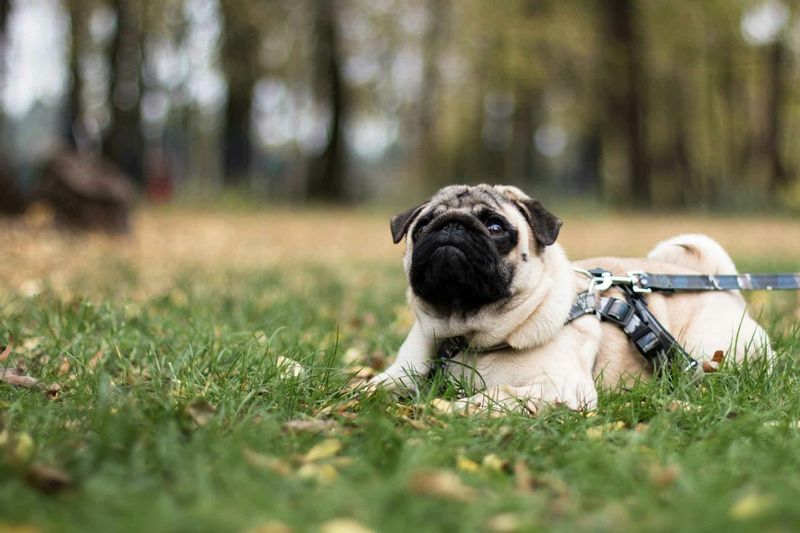
When a dog sits or lies down, it can signify a desire to de-escalate tension or show non-threat. This calming signal is often used in environments where the dog feels overwhelmed, such as a busy city park.
A Bulldog, for instance, might choose to sit amidst bustling activities to convey its peaceful intentions. Understanding this behavior helps you respect their need for space and tranquility.
Allowing your dog to remain in this position without pushing them to engage can promote a sense of safety and reduce stress, fostering a calmer atmosphere.
Paw Lifting
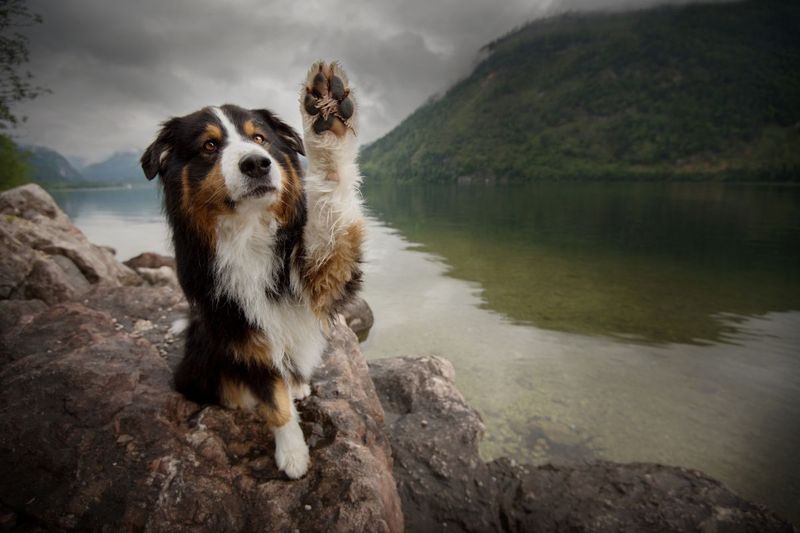
Lifting a paw, particularly in a non-playful context, is a subtle calming gesture dogs use when they feel unsure or cautious. A Cocker Spaniel may lift a paw while observing new visitors in a quiet garden.
This signal indicates they are assessing the situation and prefer not to engage in immediate interaction. Recognizing paw lifting as a calming signal allows you to manage interactions appropriately, giving your dog space to feel secure.
By acknowledging this behavior, you can create a more supportive environment, helping your dog feel more confident and relaxed in social settings.
Whale Eye
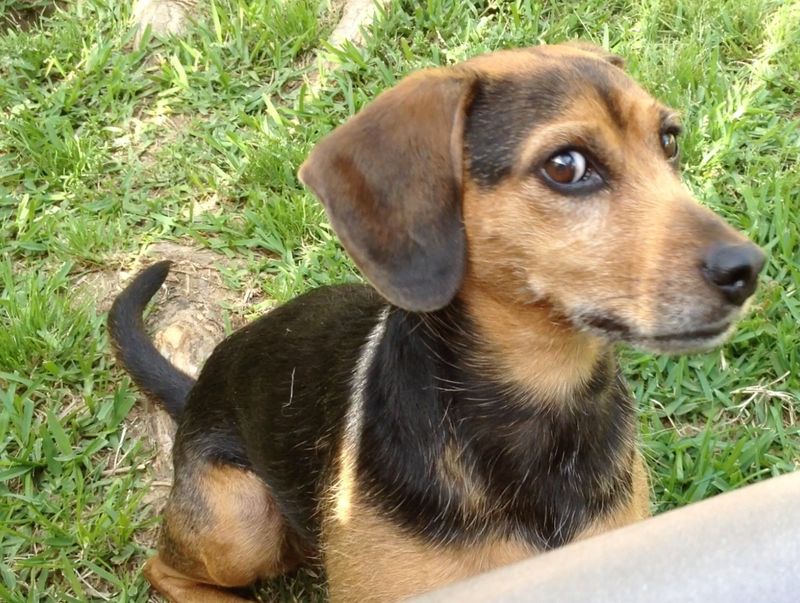
The term ‘whale eye’ describes when a dog shows the whites of their eyes, often signaling discomfort or a need for space. This can frequently be seen in places like pet stores, where a Dachshund might feel crowded or overwhelmed.
Spotting this signal indicates that your dog is experiencing stress and requires some relief. Ensuring your dog has plenty of space or removing them from the source of stress can alleviate their discomfort.
Recognizing whale eye is crucial in preventing escalation of stress and maintaining a calm, comfortable experience for your pet.
Shaking Off

Shaking off is more than just a response to being wet; it’s a way dogs reset or relieve stress. During a crowded dog training class, a Poodle might shake off to release tension or after a particularly intense encounter.
This behavior serves as a physical cue to reset their state of mind. Acknowledging this signal is important in understanding your dog’s need to decompress.
Allowing them the space to shake off and regroup can significantly enhance their comfort and readiness to continue with activities, making them feel secure and refreshed.
Blinking or Squinting
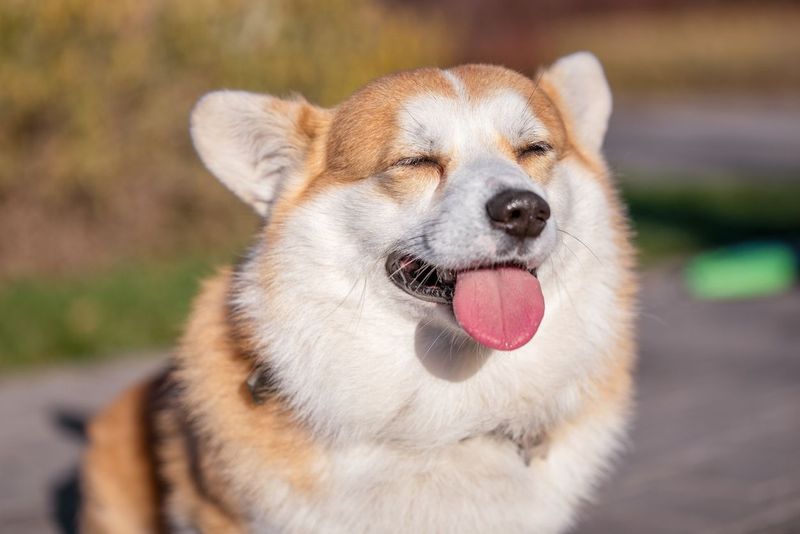
Blinking or squinting is a soft calming signal that conveys relaxation or a desire for peace. In a bustling cafe, a Pug might blink slowly to indicate it means no harm and wants tranquility.
Observing this behavior can guide how you interact with your dog, helping to maintain a peaceful environment. This signal is especially important in busy or stimulating environments where a dog may feel overwhelmed.
Acknowledging their need for calm can help in managing their stress levels and ensuring a harmonious experience in social settings.
Scratching
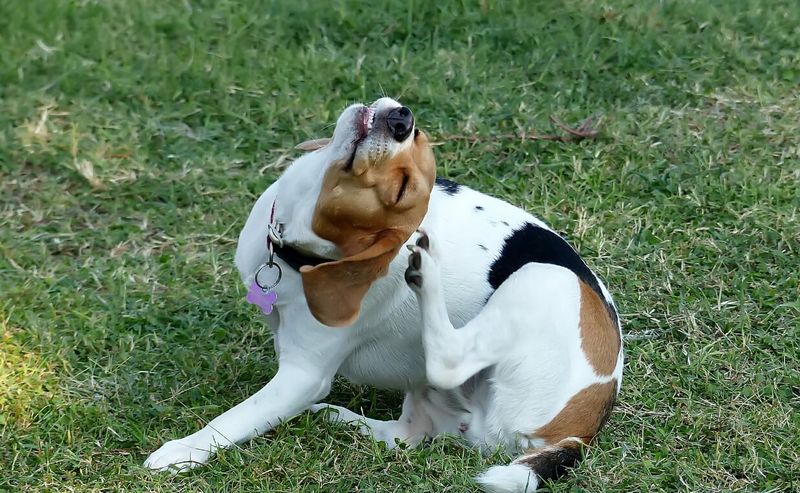
Scratching can be more than just an itch; it’s a common calming signal for dogs in stressful situations. During a family barbecue, a Shiba Inu might scratch itself not because of fleas but as an emotional release.
This behavior indicates the dog is processing stress and needs some relief. Understanding this signal allows you to address potential stressors and provide reassurance.
Creating a comforting and familiar space for your dog during such events can reduce anxiety. Recognizing these subtle cues is vital in supporting your dog’s emotional health and ensuring they feel safe.
Bowing
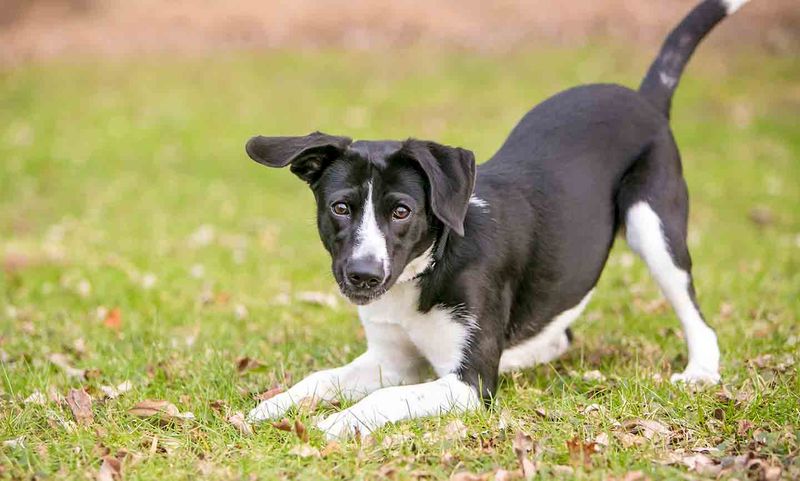
Bowing is often seen as an invitation to play, but it can also be a calming signal. An Australian Shepherd at the beach might bow to indicate friendliness and non-threat in a new group of dogs.
This behavior is a way of showing peaceful intentions and encouraging positive interactions. Recognizing the context of bowing can help you gauge your dog’s comfort and social engagement.
Encouraging this behavior in appropriate settings can foster healthy relationships and help your dog navigate social scenarios confidently, ensuring they feel welcomed and secure.
Walking in a Curve
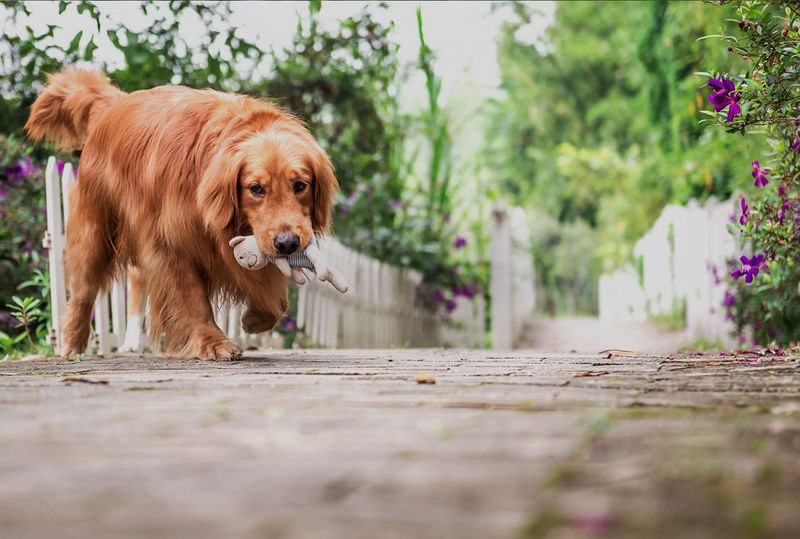
Walking in a curve rather than directly approaching another dog or person is a polite canine gesture indicating peace. A Dalmatian in a neighborhood might take a curved path towards a stranger, signaling friendliness without aggression.
This behavior helps reduce tension and fosters a non-threatening atmosphere. Acknowledging this signal allows you to understand your dog’s social strategy and respect their communication style.
Encouraging curved approaches in social situations can support positive interactions and help your dog feel more at ease, enhancing their confidence and social adaptability.

